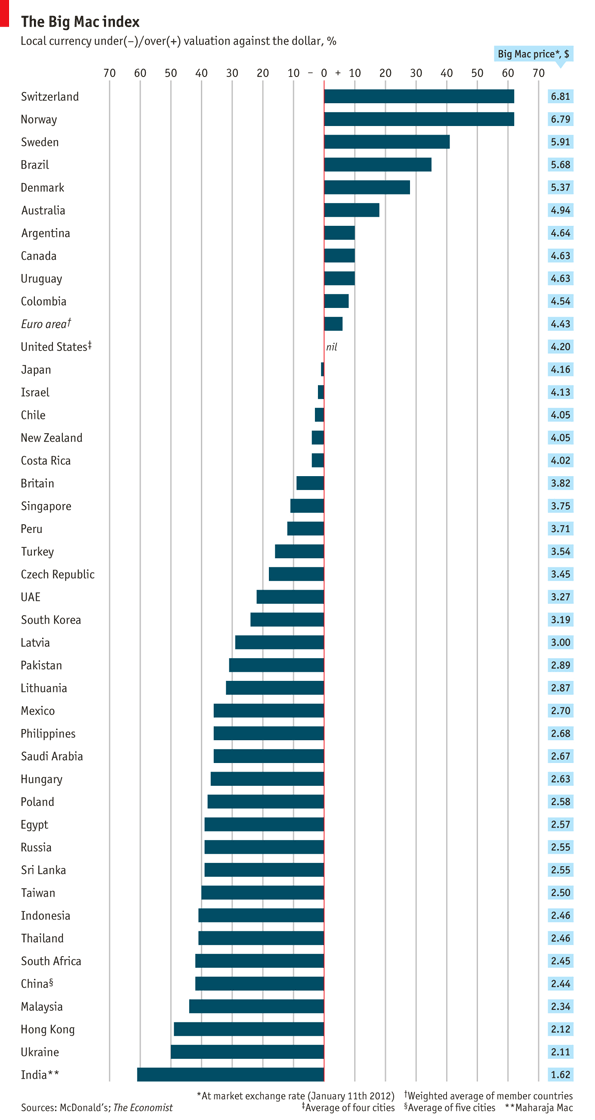The Economist is out with an updated version of their Big Mac index showing the world’s currencies price based on the world famous McDonad’s sandwich. The list of most expensive remains loaded with Europe’s sovereign nations which have no doubt been impacted by the Eurozone debt crisis. Emerging markets remain on the other end of the spectrum (via The Economist):
“THE ECONOMIST’s Big Mac index is based on the theory of purchasing-power parity: in the long run, exchange rates should adjust to equal the price of a basket of goods and services in different countries. This particular basket holds a McDonald’s Big Mac, whose price around the world we compared with its American average of $4.20. According to burgernomics the Swiss franc is a meaty 62% overvalued. The exchange rate that would equalise the price of a Swiss Big Mac with an American one is SFr1.55 to the dollar; the actual exchange rate is only 0.96. The cheapest burger is found in India, costing just $1.62. Though because Big Macs are not sold in India, we take the price of a Maharaja Mac, which is made with chicken instead of beef. Nonetheless, our index suggests the rupee is 60% undercooked. The euro, which recently fell to a 16-month low against the dollar, is now trading at less than €1.30 to the greenback. The last time we served up our index in July 2011, the euro was 21% overvalued against the dollar, but it is now just 6% overvalued. Other European currencies have also weakened against the dollar since our previous index, notably the Hungarian forint and Czech koruna, which have fallen by 23% and 16% respectively. Six months ago both currencies were close to fair value, but they are now undervalued by 37% and 18%.”

Source: The Economist
Mr. Roche is the Founder and Chief Investment Officer of Discipline Funds.Discipline Funds is a low fee financial advisory firm with a focus on helping people be more disciplined with their finances.
He is also the author of Pragmatic Capitalism: What Every Investor Needs to Understand About Money and Finance, Understanding the Modern Monetary System and Understanding Modern Portfolio Construction.

Comments are closed.